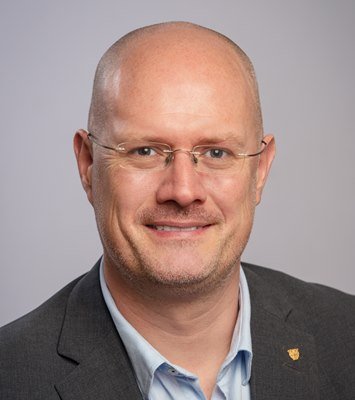Prototyping to explore uncertainty in digitalization projects
DigiGrow is a project format that helps municipalities succeed with the digital transformation of urban planning processes. Swedish municipalities have the insight that the value of digitalization can be extremely high. The struggle comes when taking the first active steps toward releasing the full power of a continuous digital information flow in daily operations. Prototyping, as used in a transformation seed, becomes the solution. As of today, DigiGrow has been run with great success in Alingsås, Linköping, Tyresö, and Umeå.
The digitalization challenge for municipalities
Digital processes are set to make all our lives easier. A fully digital experience is what is expected from any service provider in the future. Be they private or public. Digitalization is also a big part of providing more and better services at the same or lower cost, something that is always a factor for a public entity like a municipality.
Municipalities run on tax money, which is (and should be) handled with great respect. Therefore municipalities favor following the beaten track. When it comes to digitalization, that becomes a problem since the first continuous digital information flow is still to be established within a municipal process. So there simply are no pioneers to copy! Leaving the beaten track and exploring new ways forward calls for exploration, which calls not only for new tools but also a culture change. That change of culture needs to be bidirectional.
A municipal management team is an organization under pressure from tight budgets and a lack of resources. The struggle to keep up with legally mandated KPIs:s is a big part of the organization’s purpose and mission. To succeed with digital transformation, municipal management need enough peace of mind with everyday operations to allow themselves to be curious about new possibilities and ideas that emerge once exploration starts. Having them be terrified of what a new idea might mean to their already tightly planned quarter is an innovation and digitalization death sentence.
How DigiGrow works
In DigiGrow, prototyping is applied to enable digital transformation in parallel with daily operations. The setup in DigiGrow allows leaving the beaten track while still keeping core operations in check. The prototyping has a clear place and connection to the participant’s everyday work life will mean that they have a good chance to survive in the organization once the DigiGrow project is over. In order to learn as fast and cheaply as possible, the project focus is heavy on the application of prototyping. The participating municipalities get to test the use of digital tools in actual, current planning cases that is part of the everyday processes. Work is carried out in two parallel tracks by the management team and the so-called innovation teams.
The DigiGrow program starts with a situational awareness module to help management teams navigate and get comfortable with exploration. The key is to tie the prototyping activities to goals and visions that already exist for the municipalities. During an intense lunch-to-lunch session the management team workshops their way through external analysis, vision development, and goal setting. The final exercise and the main outcome of the workshop are building goal trees. The trees show the goals, key success indicators, and necessary states to help suggest an exploration route for the innovation teams and to connect the exploratory work to the existing process and goals. The tree gives us a way to follow up and see where we need to put in efforts if we are to reach our overall goals. The overall goal in this context is of course a completely digital experience in the processes we investigate.
Details of the implementation
From a governance perspective, we need management teams to point out the purpose of digitizing a certain process and which goals matter most to the organization - to give the general direction of the desired digital transformation and prototyping activities. This is captured in the goal tree and is a big part of why a DigiGrow program gives meaningful results.
Once the direction is set we activate the innovation teams. Their assignment is to explore how the goal can be reached and to further investigate potential risks and rewards along the suggested path.
For the innovation team, the DigiGrow program consists of a series of digital test labs followed by a design sprint. During the test labs, the innovation team gets to test-run existing local data through cutting-edge digital tools for urban planning (generative design, 3D visualization platforms, etc.). This allows them to experience how a continuous digital information flow could work. The purpose is to visualize what is technically possible today to help the team understand how the tested technologies could change and improve current processes. During the design sprint, the innovation team designs and builds a prototype of a potential future process and tests it on real users. The purpose is to evaluate, with real users, how current city planning processes could be improved by the use of digital tools and methodologies. After the design sprint, the innovation team shares their learnings with the management team, and together they can reevaluate the suggested route of the goal tree - have we found proof it is viable? Can we plan for implementation or do we need to learn more?
The interaction between the management and innovation teams can be illustrated with how a pilot boat and a freight ship cooperate to navigate a new harbor. The freight ship (management team) sets the destination and sends out a pilot boat (innovation team) to explore sailing conditions and any shallow spots. The pilot boat returns with data and together they calculate a route avoiding potential risks.
Thoughts from the participants
”Fantastically great and impressive what you have accomplished. The work method feels effective and I will work for it to be used by the municipality across the board”
Jacob Algulin, Digitalization Director Linköping municipality
“Umeå municipality participated in DigiGrow 2020- 2021 and i can warmly recommend other municpalities to participate. We really got help in our work with digital transformation in the project”
Mikael Brändström, Strategy Director
Umeå municpality
Learn more about DigiGrow
You can learn more about the DigiGrow project here (in Swedish):
And in case you want to run your own DigiGrow project there is a Micro-Learning course available in Swedish here: https://smartbuilt.onlineacademy.se/external/listing
The DigiGrow format was originally developed in a project funded by Smart Built Environments and managed by Agnes Sävenstedt of Rhubarbs.






